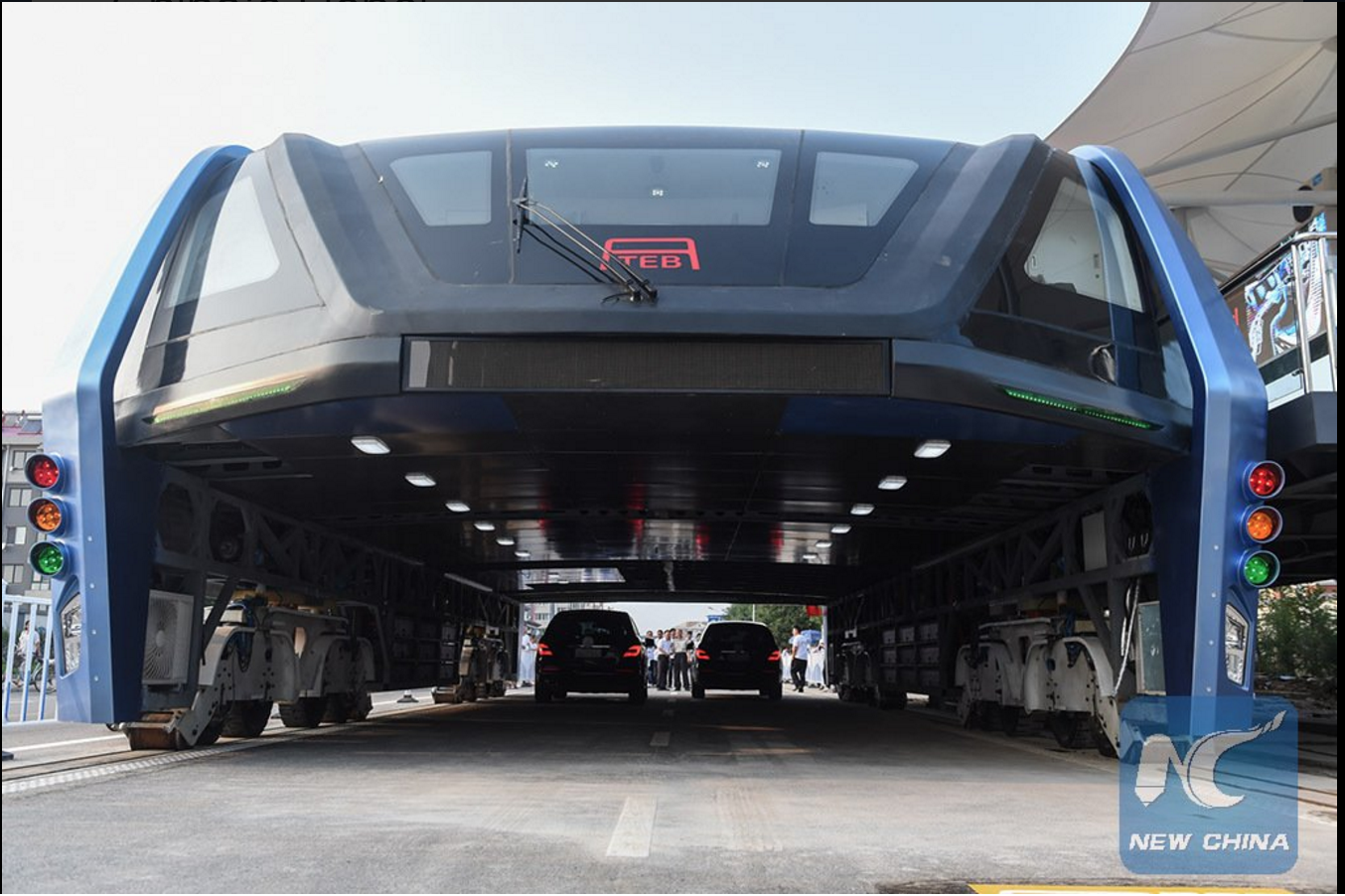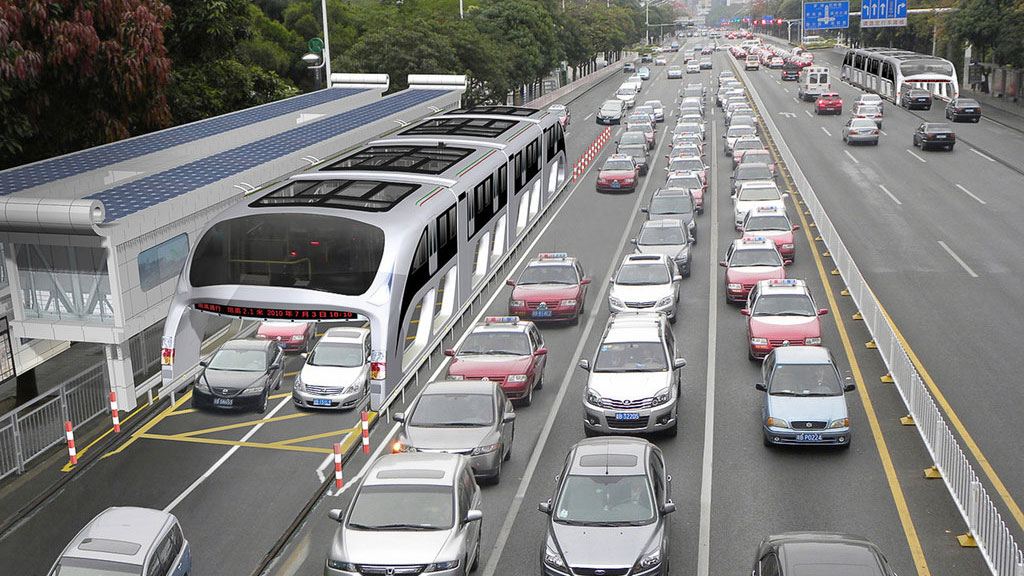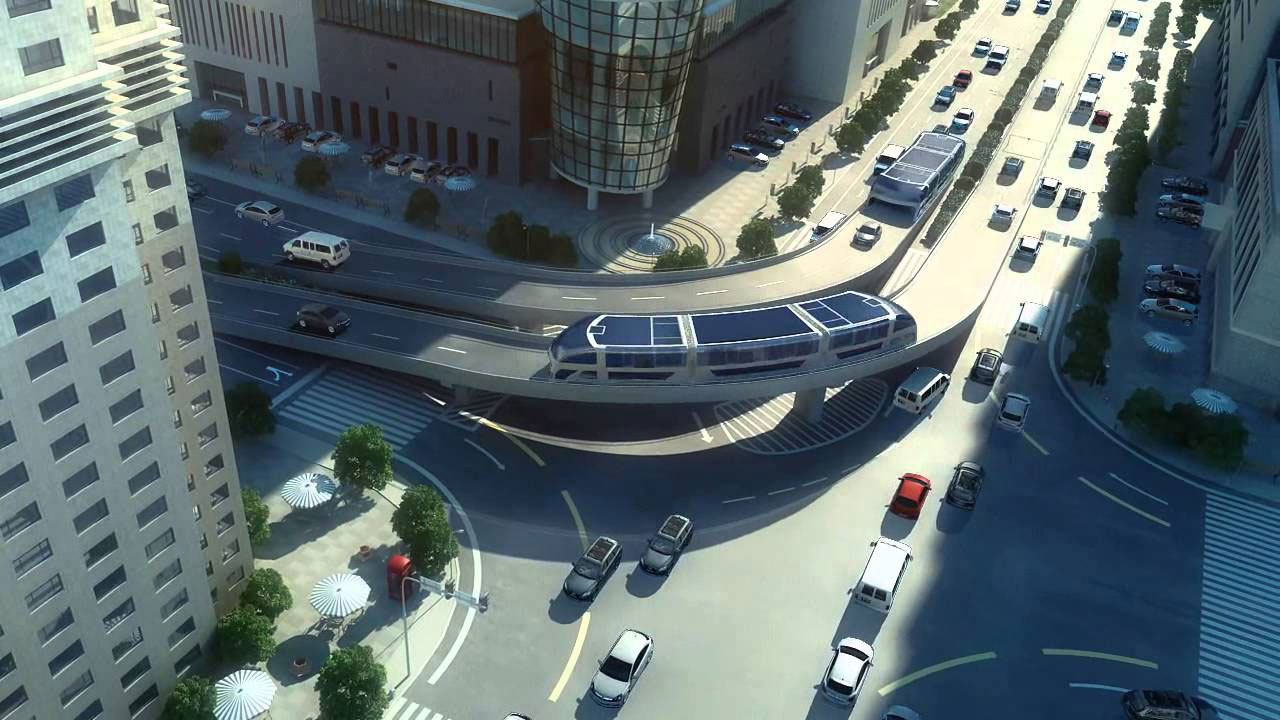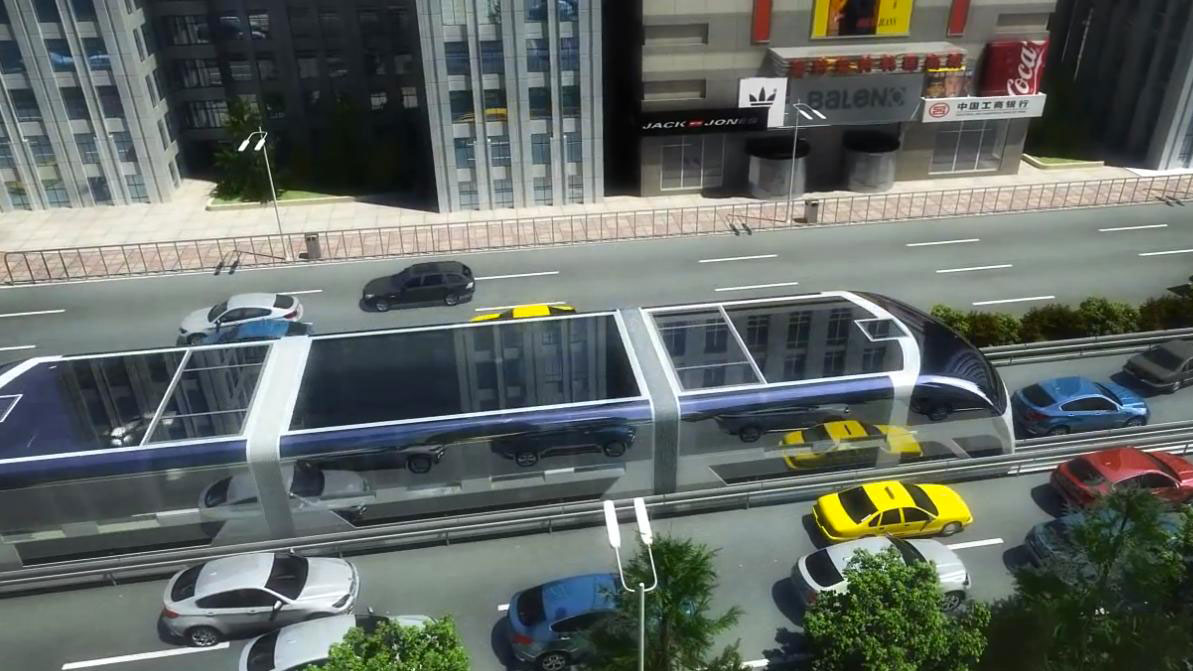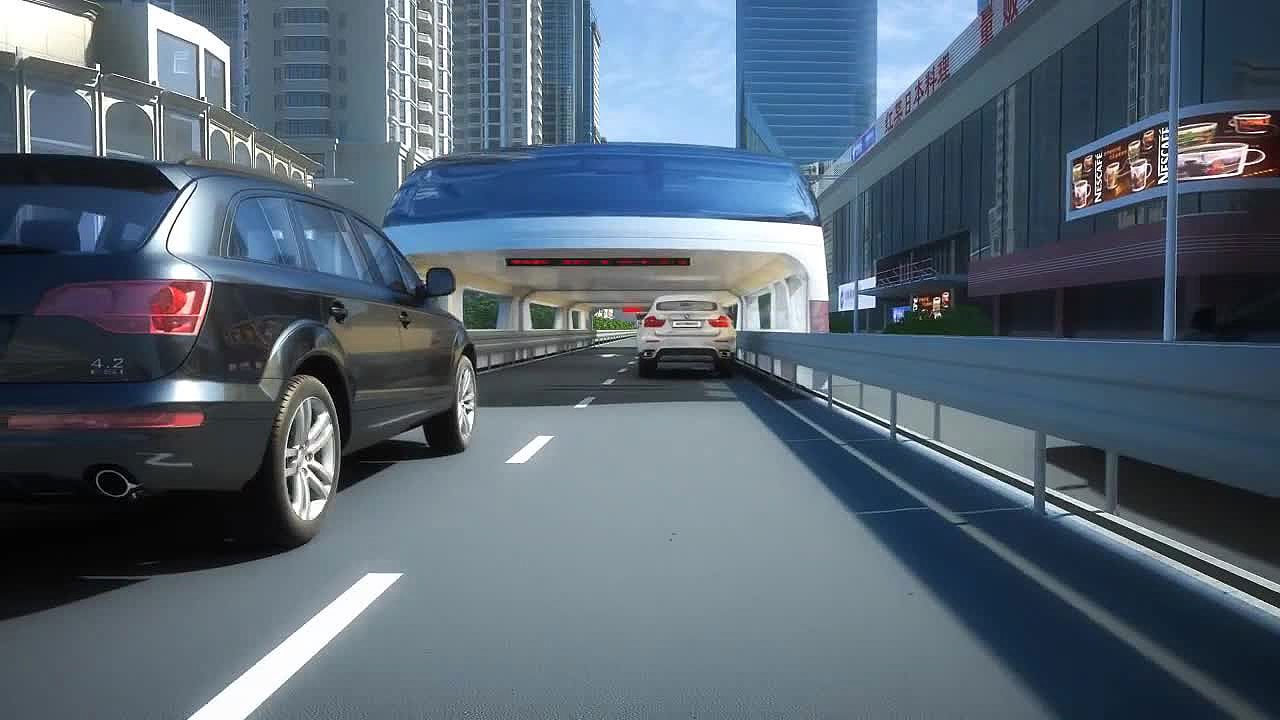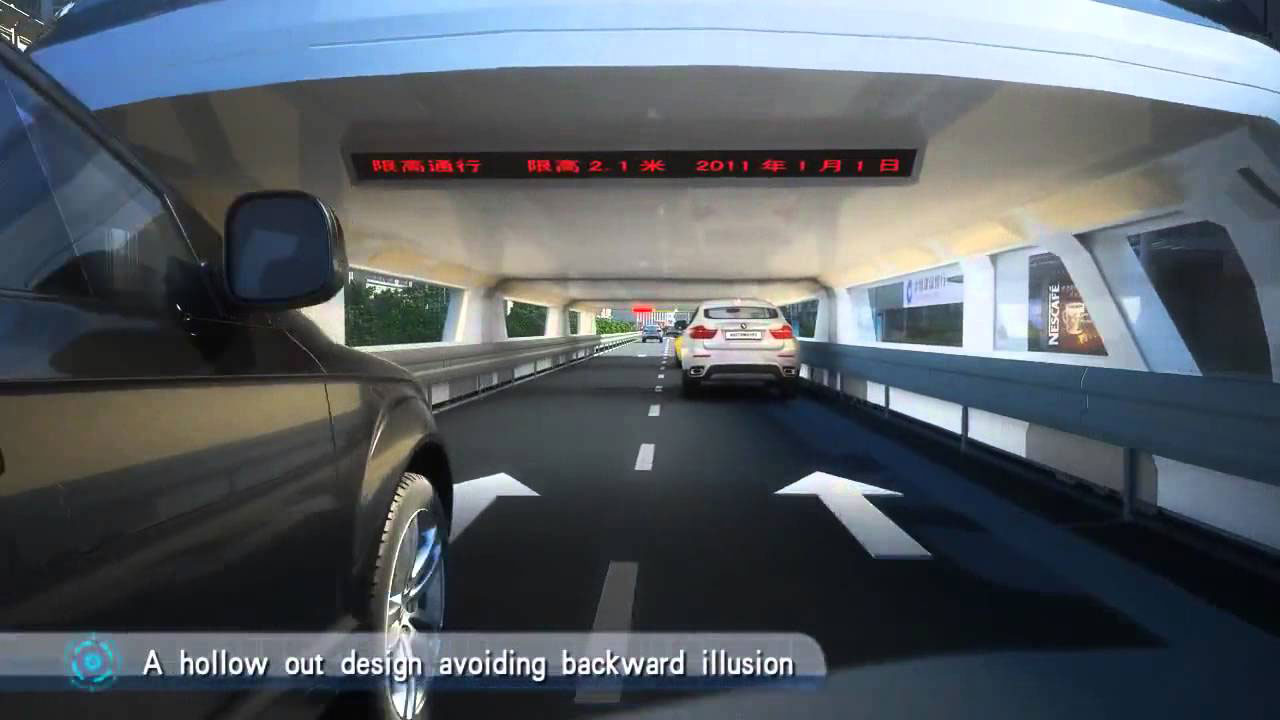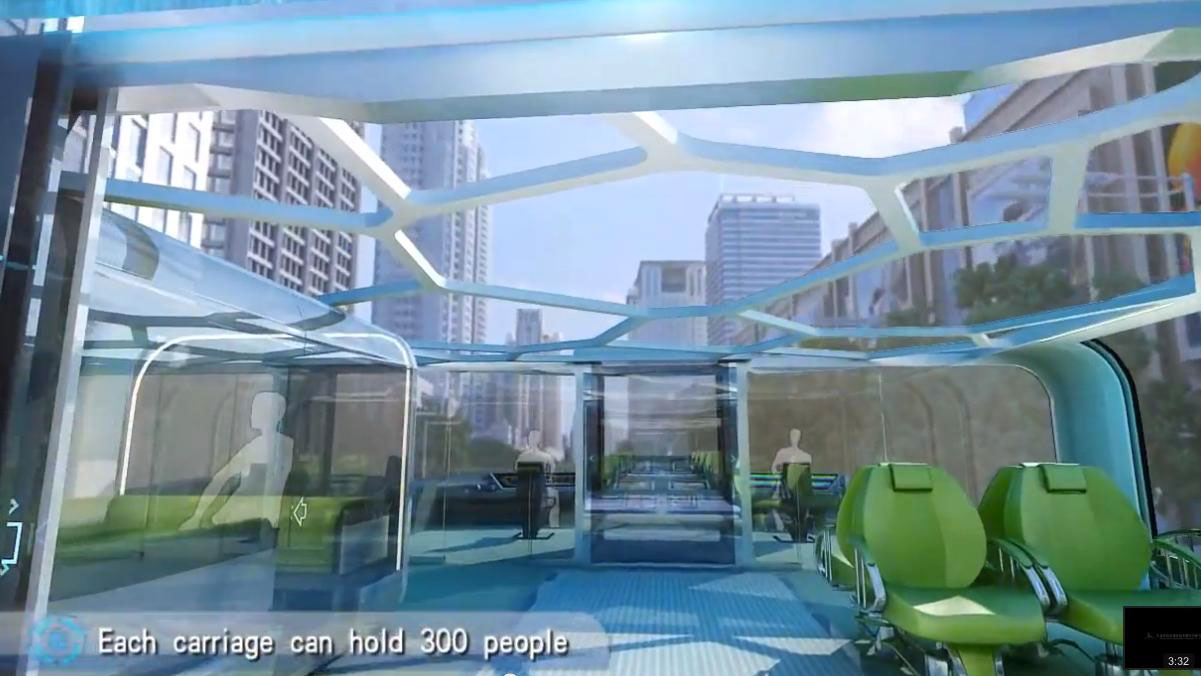The Hyperloop may help humanity travel great distances at remarkable speeds, but how should we sustainably get from point A to B in congested cities? An innovative public transport design looked like to could have offered a solution. It was known as the Transit Elevated Bus (or, “straddling bus” for fun) and while we were excited about testing it underwent in August, it looks like our enthusiasm might’ve been a premature.
Now, the authorities are getting involved. Police in Beijing announced on July 2 that they have begun investigating the company behind the project for alleged illegal fundraising, according to Quartz. The authorities are now holding 30 people associated with the fundraising platform Huaying Kailai, which accepted some $1.3 billion from individual investors, according to the Southern Metropolis Daily. 72 of those investors have filed suit against the company.
The December reports from China suggested that after initial tests, the straddling bus had been abandoned. It hasn’t moved in more than two months, and as the Shanghaiist reported, “A local reporter recently checked up on “the future of public transportation” at its testing site in Qinhuangdao, only to find it forgotten in a rusted garage, covered in dust.”
Even its security team let the bus slip their minds — “The managers from the company have long drifted away, and I am unable to contact them,” said an unidentified guard. Apparently, serious financial issues have contributed to the demise of the project, and now, the electric bus is just … taking up space.
The electric bus, which looks a lot like a moving tunnel, is designed for capacity and efficiency, not necessarily for speed. Last year, the futuristic locomotive made its debut in Qinhuangdao, Hebei province. Sure, it wasn’t a full display of its ultimate capacity (it only transversed a controlled track of just 300 meters), but it was a proof of concept beyond anything we’ve seen before.
It was built extra wide to carry up to 1,400 passengers, and was made extra tall to allow any cars under seven feet to travel underneath, whether the bus is in motion or not. This is important because, as a public transport vehicle, the bus would stop and start frequently to load and unload passengers. And, with a top speed of 40 miles per hour, restless drivers would undoubtedly want to pass through.
The bus was also considered environmentally friendly. Its size would allow it to replace 40 conventional buses and, since it’s powered by electricity, the design would reduce fuel consumption by some 800 tons and carbon emissions by nearly 2,500 tons every year, chief engineer, Song Youzhou, told China’s official news agency, Xinhua.
Song’s design isn’t new, however, and neither is the concept. Back in 2010, Song gained media attention when Beijing proposed plans to develop an infrastructure to accommodate his bus by year’s end. No tracks were ever laid, so many assumed the project would remain an idea.
Treehugger reports that the idea of straddling buses was first proposed by two American architects, Lester Walker and Craig Hodgetts, in 1969. The concept was ambitious, even by today’s standards, including computer-driven vehicles, perpetual motion, and “friction-free air cushion bearings” as wheels. Walker and Hodgetts suggested the design be used to modernize New York City.
If all had gone well, the design might have helped curb the carbon emissions created by approximately 20 million new drivers who take to the road in China every year.
But at this point, it does not look like things are going well at all.
Update: Article revised to reflect reports indicating that the straddling bus had been abandoned in December 2016. The Beijing police have now announced that they are investigating the project as an alleged scam.
